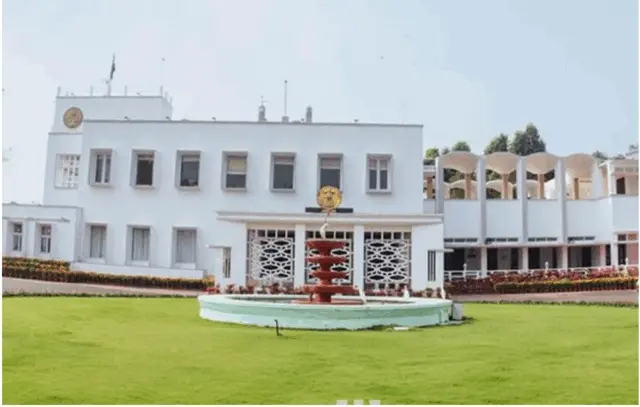Steel: The Consumption Scenario in the Country
India’s per capita consumption of Steel is hardly 75 kg as against World average of about 230 kg and China’s 700 Kg. Thus there is a great need to augment consumption of Steel in India , which aims to be a $5 Trillion economy in a few years . In our country, steel is mostly consumed in three segments (i) Housing, Construction and Infrastructure (ii) Automotive and (iii) Manufacturing/Fabrication. Housing, Construction & Infrastructure industry consumes the maximum quantity of steel which is approximately 60-65% of total steel consumption. For higher consumption of structural steel in the country, our focus should be on how to increase of steel usage in housing sector, where there is a need to make the end-users aware about the benefits of Steel.
The advantages of steel over the other building materials are to be understood first .
Why Steel ?
Steel is far better than other competitive materials of construction with its inherent benefits. The major benefits of Steel Structures , compared to other materials like concrete , are :
|
|
Steel Vs Other materials of Construction
Steel vs RCC
Reinforced concrete, which is used in majority of buildings and infrastructures, is a heterogeneous material consisting of cement, sand, stone chips and reinforcement bars. Though concrete can withstand huge compressive force, due to its brittle nature concrete structure can collapse suddenly to any disastrous load like earthquake and cyclone without giving sufficient time of damage repair. Property of a steel section is much predictable as it is a homogenous material. In comparison with reinforced concrete, steel member can carry higher load with lower member size and weight , keeping the overall weight of the structure lower than RCC. The foundation cost is also reduced. High ductility and better energy absorption capacity of steel lead to better seismic resistance than concrete. Steel members deform without sudden collapse , and give time for repairs and avoid any damages to assets. Speedy and faster construction of steel structure utilizing prefabricated components facilitate quicker return on the invested capital. Steel structure is cost-effective based on Life Cycle Cost (LCC) analysis. Cost of formwork, handling and transportation may also be kept lower compared to that of RCC construction because major parts of the structure can be fabricated in the workshop.
Steel vs Aluminium
Now-a-days, aluminum is also being used in doors and window frames, partition walls & false ceiling roof, external building facades, staircases, railings, shelves, and several other applications, But it is not resistant to heavy load and it can deform in strong wind or seismic and any accidental disastrous load. Light gauge steel members, lighter angles channels and hollow steel sections etc. can replace the aluminum in doors, windows, facades, false ceilings, stair cases and any non- structural applications at much lower cost, and with greater strength. Tata Steel’s Pravesh Doors have created many satisfied customers, who have chosen Steel over Wood or Aluminum. Steel is more cost-effective than Aluminum.
Steel in Construction Today & Tomorrow- Housing Industry in India
Steel has its own market in Industrial Infrastructures. At present use of structural steel section like I-section, channels, angles, tubular sections, coated /galvanized sheets, etc. (other than reinforcement Steel) is also gaining popularity in commercial buildings. Steel has become more adoptable as it is also used in combination with other construction materials, like glass & aluminum in building facades and different types of sandwiched panels walls or claddings. Steel deck used in flooring also reduces the cost of formwork. Recyclability of steel also makes steel buildings more beneficial and useful in its longer life. Rapid construction of steel building is advantageous due to lower disruption to community services, fewer vehicle movement to site, little on-site noise and better waste management. Currently, India’s buildings account for around one-fifth of total CO2 emissions. India’s sustainable development targets can be met to a great extent with a change in building materials like developing steel framed buildings in the upcoming smart cities, mass housing projects and also in slum resettlement projects.
Steel framing has good use in being adopted in all types of housing in rural areas under PMAY schemes , anganwadis, panchayat halls, school buildings etc. and also in urban habitats, be it low-rise or multistoried . Dry method of construction with steel helps environment by less consumption of water, in saving of natural resources and reduce the carbon footprint to a greater extent.
With the varieties of structural steel sections manufactured by major steel producers in India (SAIL, TATA, JSW, RINL, AM/NS, ) designers, developers and architects are now able to give an aesthetically pleasing shape to their housing projects. Steel buildings are built by skilled labours maintaining highest safety standards under BIS Codes and are mostly engineered (unlike RCC constructions, most of which are non-engineered). Hence the assurance of the life of the structure and also value for money are achieved.
Govt Departments, Engineers, Architects , Designers and Academicians all have a great role and responsibility in promoting usage of Steel in long term interests of the economy .
Institute For Steel Development & Growth (INSDAG)
(promoted By Ministry of Steel, SAIL, Tata Steel , JSW , RINL and AMNS)
793, Anandpur, Kolkata – 700107
Email address: ins.steel@gmail.com, insdag@rediffmail.com
Website: www.steel-insdag.org
-OdishaAge




